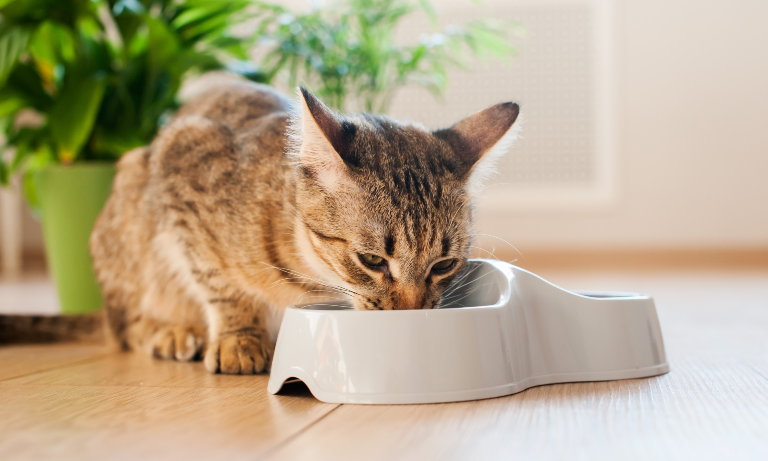The veterinary voice for animal welfare: reflecting on BVA’s updated Animal Welfare Strategy
11 Jul 2025
In this blog, Sally Everitt, Chair of the BVA companion animal feeding working group, explains how the group approached the topic of diet choices and the recommendations they reached.

A complex topic
Pet food, especially food for dogs and cats, seems to have become a very complex topic which generates some strong opinions. Discussions on the best diet choices for cats and dogs can be long, difficult and complicated, so it’s no surprise our research shows most vets do not routinely have these discussions with their clients.
The pet food industry association, UK Pet Food (formerly PFMA), lists 109 members, which accounts for 90% of the UK pet food industry, including multinational companies and smaller companies providing more niche products. Each of these companies will be providing a range of products, including conventional kibble, raw diets, insect-based diets and most recently a diet using “cultivated” meat from a single sample of cells.
So where do we start when asked by clients about feeding their pet?
An evidence-based approach
When I was asked to chair the BVA working group on companion animal feeding, I was very clear that I wanted to take an evidence-based approach to this complex subject. During our work, we set and followed some clear principles, focusing on the feeding of dogs and cats, and looking at several broad themes:
While we started by discussing these themes individually, it became very clear that there is significant overlap. It showed that the way we feed our pets should not be considered in isolation from other aspects of farming and human health, making it a true One Health issue.
What conclusion did we reach?
First and foremost, having set out to take an evidence-based approach to the subject we found that there are many areas where evidence is lacking, and we all need better information to inform our choices and decisions.
Owners need access to scientifically sound and unbiased sources of information and advice to enable them to make appropriate diet choices for their pets. This will require clearer and more consistent labelling of pet food, including more detail of the ingredients (rather than broad categories) so that owners who wish to do so can access information on sustainability and the welfare standards of any production animals.
What can vets do?
To provide advice to our clients, we also need access to good information. Veterinary training tends to focus on clinical nutrition rather than requirements for healthy cats and dogs. The information and training provided by pet food companies plays an important role, but must always be complemented by independent teaching to ensure all vets are able to critically appraise information and make recommendations that are not restricted to products from a single company.
We also have an important role in contributing to the evidence-base. We need to pay more attention to the role of nutrition in health and disease, including recording dietary histories and potential adverse effects, as well as collecting data for independent research. This will allow us to better understand the long-term impact of some of these newer diets.
Perhaps the simplest thing our work showed is that ensuring animals are fed the right amount of food is one of the clearest ways to improve their health and welfare, as well as bringing financial and sustainability benefits. This is a good place to start for anyone considering a pet’s diet.
Get tailored news in your inbox and online, plus access to our journals, resources and support services, join the BVA.
Join Us Today